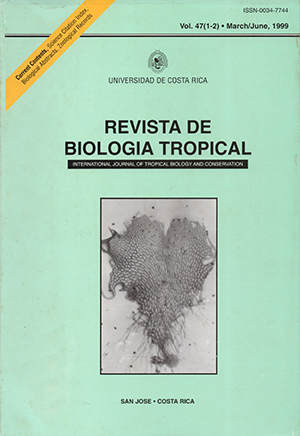Abstract
Feeding behaviour of four species for large shorebirds (Scolopacidae) was studied in a tidal mudflat, Chametla, Mexico, to determine the foraging efficiency of Limosa fedoa, Numenius phaeopus, Numenius americanus and Catoptrophorus semipalmatus in a stopover/wintering area; and their activity with the tide cicle. The study area was visited in the winter of 1993 during the daylight hours. Each species was observed for 15 min during each tide type. The tide type does not affect the frequency with which the species use the different foraging strategies. In general, probing was more efficient than pecking. Considering distribution and prey, L. fedoa had the highest efficiency with this feeding strategy. Both species of Numenius were more efficient with pecking than other species. C. semipalmatus has the highest efficiency because it is an oportunistic species, L. fedoa is generalistic, both Numenius are especialists and C. semipalmatus is oportunistic.##plugins.facebook.comentarios##

This work is licensed under a Creative Commons Attribution 4.0 International License.
Copyright (c) 1999 Revista de Biología Tropical
Downloads
Download data is not yet available.


